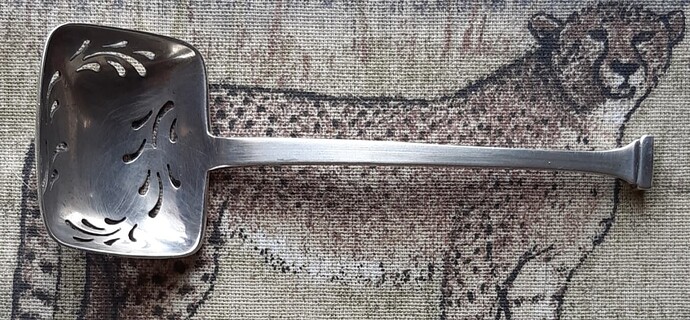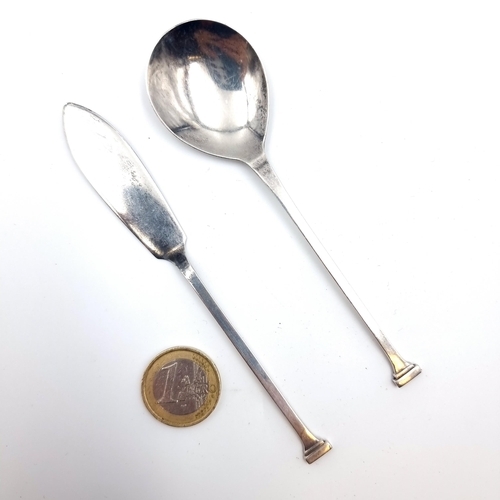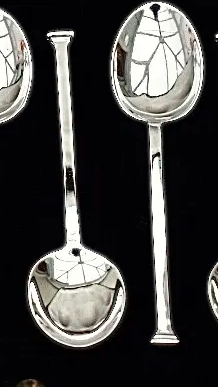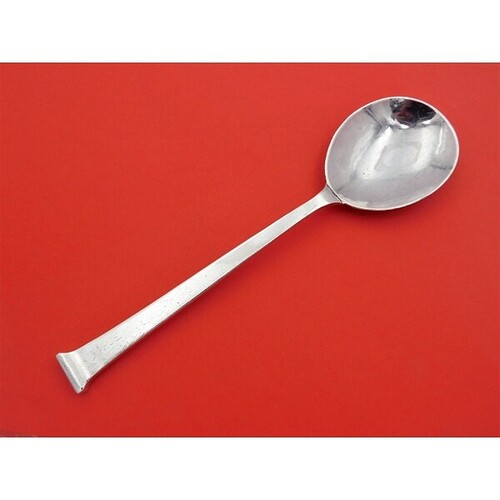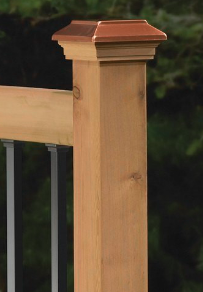Friends, I have a nice sterling silver sugar sifter made in 1911 by F H Adams & Co (please see pic). I would like to know the name or style or pattern of the terminal, or finial of this spoon, as my searches have been unsuccessful. Please help out.
Regards
Jan
Friends, in the absence of replies or suggestions, I am thinking the shape of the finial might be rather unremarkable, like in art deco or something likewise?
Regards
Jan
I’m sure I’ve seen that style described as something specific. I had thought it might be “anvil” but I can’t find any examples using that name. I have found one example on the well-known auction site which uses the term “reverse pedestal”.
Phil
Phil, following your kind comment, I sallied forth searching high & low, and found the following:
- Birmingham makers A.Wilcox, dated 1947, calls the finial style by the name “paddle”. This I judge to be incorrect.
- Cooper brothers, London calls their finials “Seal End”; this once more is incorrect.
- Omar Ramsden, London, early 20th century, made coffee spoons in the Arts & Crafts style with twisted tapering stems and “nail head” finials. Here we have a good possibility.
- The Northern Goldsmiths Company, Newcastle also calls the finials “Nail Head”.
- Cooper Brothers & Sons Ltd. Sheffield calls the finial pattern “seal”. Wrong.
- I saw a set of six Art Deco “Nail Top” coffee spoons, with the following remark: “Nail top spoons have a small oblong finial and are a very old medieval design that was revived and became popular in the Art Deco era between the wars.” Interesting!
- Leslie Durbin, London 1949, calls the finial “Nail top”.
- Simon Moore in an article in The Finial magazine describes: “Non-matching set of ‘Nailhead’ teaspoons with ‘Ramsden twist’ stems, elliptical bowls with rat-tails and hammered finish; assayed between 1933 and 1938 by W.H. Haseler.”
- Moore continues: “Flatware as such (as opposed to individual items) seems very sparse from either Ramsden or the partnership except for a design, which incorporated a twist design in the stem and a square ‘horseshoe-nail’ finial”.
- Moore asks: “Did the nail head finial spoons cease to be made by either Ramsden or Carr at this time? Ramsden appears to have continued with this design, complete with the mid-stem twist, well into the 1930’s. Examples of this design were copied throughout the 1920’s by the firm of William Hair Haseler whose workshop executed most of the Liberty spoons. Collectors of spoons from this period will certainly recognise the WHH mark, especially on the plainer versions of the nail-headed teaspoons, although the latter tended towards a greater plainness.”
- Moore lists another set of ‘nailhead’ teaspoons without the twist stems and with more typical mass-produced style bowls, by Haseler, 1923. One of the spoons has more of a ‘baluster’ finial.
- Moore ends his article by asking if anyone has any information regarding the naming of this style of nailhead finial.
Please see a few pics I have selected to show.
Regards
Jan.
Some comments:
i. The second-last pic with the red background show the finial looking very much like a horseshoe nail.
ii. The wooden square baluster bears a striking resemblance. (As does your ‘reverse pedestal’, Phil!)
iii. I also saw a spoon with a typical nailhead finial, but with an apostle mounted on top of it!
iv. So, in summing everything up, can we be happy that we have enough collected evidence to be sure that “nail head” is the correct term?
Regards
Jan
Nailhead sounds good to me, Jan. The shape certainly brings to mind the old-fashioned hand-forged square-headed nails where the head gets hammered into wood.
Phil
If you please, Phil and friends: Looking at my very first pic at the top, I have a close friend who has the opinion that the spoon seems not to be a sugar sifter. He reckons the fact that the center of the spoon’s bowl is not perforated makes it to be rather some kind of fruit strainer. Would he perhaps be right, do you think?
Regards
Jan
I’ve never really understood why spoons with pierced bowls are called sugar sifters. They’d really only be any good with icing/powdered sugar and who uses that domestically? Straining the juice from fruit would certainly work with a spoon like that.
The bottom line is - I don’t know.
Thank you for all the advice & help, Phil!
